
Knowledge Hub
When you think of refugees, you may think of newspaper headlines and angry tweets about “crises” and “drains on resources”. But for every headline about a refugee, there is a person who is seeking safety and a better future.
Refugees are often the subject of sensationalist headlines and articles that whip up concern about resources, houses, expenditure and safety, and make readers forget that behind the figures and harmful rhetoric are real people fleeing real danger.
In May 2022, the number of people forced to flee their homes due to persecution, conflict, violence and human rights violations reached more than 100 million for the first time on record (according to UNHCR figures), now reaching 103 million. This figure includes those forced to cross international borders, and those displaced within their own country. It is estimated that there are 32.5 million refugees - that is, people who have fled the country - globally.
Earlier this year in Ireland, a number of small but vocal anti-refugee protests were held around the country, opposing the alleged strain on Ireland’s resources from refugees. However, just 17% of all refugees are hosted by high income countries, and while some talking heads like to make out that refugees are coming to countries like Ireland to get benefits or “take” jobs and accommodation, the vast, vast majority of people leaving their homes are making a dangerous decision to do so.
Leaving the country they were born in is often a life or death choice, and even fleeing does not mean safety. Since 2014, over 50,000 people have died while migrating; most of them crossing treacherous seas in small boats, others in the backs of crowded and refrigerated trucks.
Here, we explain what exactly a refugee is, where they come from, which countries are hosting them, and just some of the reasons refugees risk their lives to move to different countries.
Who is a refugee?

A refugee is a person who flees their home, crosses an international border, and cannot return home as they believe their life is in danger. They could be fleeing armed conflict, or persecution based on their race, religion, gender, sexuality, nationality, or politics.
If a person is displaced from their home, but does not cross an international border, they are considered an IDP, or internally displaced person. IDPs are included in the 103 million figure we mentioned earlier.
Meanwhile, an asylum seeker is someone who has crossed an international border and claims to be a refugee, but has not been recognised as such yet. Currently, they must apply for protection in the first EU country they enter, and receive refugee status once a positive decision has been made by national authorities. Not every asylum seeker will be recognised as a refugee, but every refugee begins as an asylum seeker.
Outside these definitions is a migrant. Migrants are often lumped in with refugees in the media, and there is some confusion about the distinction between the two groups. While there is not one universally accepted definition, migrants choose to move not usually because of persecution, but to improve their life by seeking work, education, or better living conditions, or reuniting with family.
Refugees are protected by the Universal Declaration of Human Rights, which states, in article 14, that everyone has the right to seek asylum from persecution in other countries; and the 1951 UN Refugee Convention, which protects refugees from being returned to countries where they risk being persecuted. The 1990 Migrant Workers Convention also offers protection for migrants and their families.
As for the demographic, over half of the 103 million displaced worldwide are women and girls. An estimated 36.5 million of refugees are children, and 1.5 million children are born as refugees.
Where do refugees come from, and where are they staying?
Refugees and migrants come from all over the world. Ireland hosts refugees and asylum seekers from Nigeria, Georgia, Somalia, Afghanistan, Pakistan, Algeria and Syria, to name but a few.
As of June 2022, over 70% of recorded refugees came from five countries - Syria (6.8 million), Venezuela (5.6 million), Ukraine, (5.4 million) Afghanistan (2.8 million), and South Sudan (2.4 million).
As for where they are staying, Türkiye is host to the most refugees, with 3.7 million, the highest figure worldwide. This is mostly Syrian refugees. After Türkiye is Colombia (2.5 million), followed by Germany (2.2 million), Uganda (1.5 million) and Pakistan (1.5 million). In most cases, people affected by the world’s largest refugee crises aren’t able to make it to high-income countries in Europe or North America. Instead, 69% of refugees take shelter in neighbouring countries, with 74% of the world’s refugee population hosted by low and middle-income countries. Ireland is home to 74,000 asylum applicants, the majority of whom are Ukrainians.

What are refugees fleeing from?
Every refugee’s situation is different, but often, they are fleeing real danger in their home countries due to their identity, or reasons outside their control.
Conflict
Conflict and violence are sadly a constant reason for people fleeing their homes. Across the world, there are ongoing conflicts that you will know about, and some that you may not.
For example, the Ukraine conflict which began in February 2022 made headlines worldwide for months on end, and resulted in millions of Ukrainians fleeing their homes to neighbouring countries including Poland and Hungary. Millions more remain displaced inside the country, and in danger of ongoing attacks, while many refugees around Europe have yet to be reunited with their families.
In contrast, some ongoing conflicts rarely get media coverage, like that of the Democratic Republic of Congo. The humanitarian crisis in DRC marked its tenth anniversary in 2022, and one in four Central Africans have been displaced due to violence, either internally or as refugees in neighbouring countries. Those who remain in the DRC face additional threats like gender-based violence (with a new incident reported every hour), forced labour and conscription for children, and a shortage of basic needs including water, food, and education.
Conflict often overlaps with other factors and exacerbates the danger. When conflict meets political instability in Eritrea, or extreme hunger and drought in Somalia, or a food crisis in Haiti, fleeing for a better life can often be the only option.
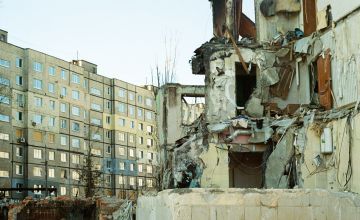
Persecution
Persecution is the abuse and denial of the human rights of individuals or group, which can include violence, ongoing discrimination, imprisonment, or even death. People may be persecuted because of their race, religion, gender, sexuality, nationality, or politics.
For example, in some countries, it is illegal to be homosexual or transgender, while in others, people who practise a minority religion could face severe discrimination. You can imagine how traumatic it would be to hide a key part of your identity to escape abuse; it is no wonder that many refugees flee in fear of their lives, simply for being themselves.
Persecution can intersect with conflict; for example, during periods of conflict, women are at risk of gender-based violence, including sexual assault and rape. Sexual violence is often used as a tactic of war, and being a woman or girl in some countries is extremely dangerous.
Climate change
If your house was washed away by floods, or your crops and livestock died due to dry weather, or you were unable to generate an income through agriculture, or your water source dried up - wouldn’t you consider moving?
We can all see the effects that climate change is having on our world right now. Drought is devastating East Africa, which is experiencing its sixth failed rainy season and threatening famine in Somalia. Floods caused an estimated $40 billion worth of damage in Pakistan in 2022, and affected over 33 million people. Europe is experiencing record temperatures and wildfires each summer. Climate migrants are not yet offered asylum by any nation, but already, an average of 21.5 million people are forced from their homes every year by natural disasters.

According to the UN’s Intergovernmental Panel on Climate Change report, which was published last year, 143 million people are likely to be uprooted by drought, rising sea levels, rising temperatures and other climate catastrophes over the next 30 years, resulting in growing migration.
As the countries most affected by climate change are those who are least responsible for it - places like Bangladesh, Chad, Sudan and Haiti - it is likely that more and more people will flee their countries as our planet continues to heat up.
While the 1951 Refugee Convention does not apply to climate migrants, in 2020, the UNHCR published legal guidance on offering protection to people displaced by the effects of global warming, saying that climate change should be taken into consideration in certain scenarios where it intersects with violence. And last year, Argentina introduced a humanitarian visa allowing people from Mexico, Central America and the Caribbean who have been displaced by natural disasters to stay for three years.
Poverty
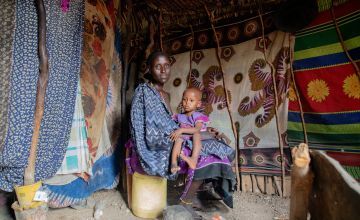
Extreme poverty often intersects with conflict, violence, persecution and climate change, but can be a reason on its own for a migrant to flee their country. The cycle of poverty in the world’s poorest countries can be extremely difficult to escape due to inequality and a lack of resources, as well as the previously mentioned factors. If a parent cannot feed their malnourished children in Somalia, or Niger, or Burundi, crossing international borders for a better life may be the only path to survival they can see.
Accessing better work and education opportunities elsewhere can be a way to break the cycle of poverty, and give hope of a better future to families.
Fleeing in fear
Fatima* from Syria
It has been over a decade since the beginning of the ongoing conflict in Syria, which has brought extreme poverty to the country, and forced over 14 million Syrians from their homes. Most refugees fled to neighbouring Türkiye, with Germany, Lebanon, Jordan, Iraq and Egypt also hosting large communities. Twelve years later, the fear felt by refugees fleeing violence back in 2011 is still unimaginable.
Fatima lived in eastern Syria with her husband and three children, and called their life “very beautiful”. Her husband was a school teacher, and walked their kids to school every day. Fatima’s eldest son dreamed of being a doctor; her daughter wanted to be an engineer. “Life in Syria was very different, everything was simple. We were content with all things, as a housewife I had everything I wanted,” Fatima said. “Life was happy and then it was completely turned upside down.”
At the beginning of the conflict, Fatima’s husband left their house and never came back. Fatima and her relatives frantically searched for him, but sadly, they discovered he had been killed. After eight months of sheltering at home with her own mother and young son, destruction came to her village. “One day, I was sitting with my friends and planes started dropping bombs everywhere, some were very close to us,” Fatima explained. I was sitting by the window and the broken glass hit my face. Since that moment, I don’t feel anything anymore. It is as if my soul left my body that day.”
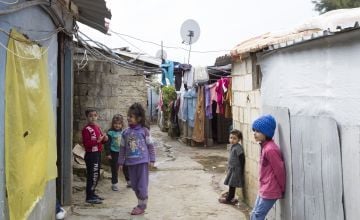
Fatima was forced to flee with her children to Türkiye, where she remains to this day. She said: “I was afraid for my children a lot, I would get scared at any little sound and was worried that one of my children would suffer from mental health problems because of that constant fear of someone attacking our house. When we came to Türkiye, things were better and I received support to make living with my children possible. Life here is much better than Syria. Life here is safe. We can sleep without fear.”
She does not believe that they can ever return to Syria, due to safety concerns and a lack of opportunities. Fatima said: “Honestly, from the moment I lost my husband. I think I lost my life too, I feel no hope. I live only for my children.” Her children are now attending school in Türkiye, and Fatima hopes that they get to achieve their dream jobs. “Seeing my children go to school here in Türkiye makes me very happy. Seeing that my children are alive and healthy makes me happy and I feel content.”
Sofia* from Ukraine
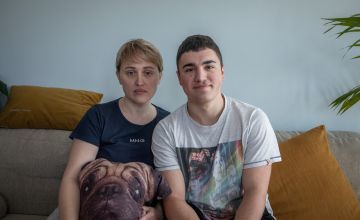
In February 2022, the eyes of the world were on Ukraine as conflict displaced millions of Ukrainians within the country, and forced millions more to flee. Refugees fled to border countries like Poland and Hungary, as well as countries across Europe, including Ireland and the United Kingdom.
A year on, it may be forgotten how difficult and dangerous the journey out of Ukraine was for families fleeing to safety, and those separated from the ones they love. Sofia* and her husband Vanko* were living in Zaporizhzhia when they heard on February 24 2022 that Kherson, where their son Anton* was studying at the naval academy, was under attack. They decided to travel to Kherson to collect Anton, seeing fighter jets, explosions, shelling and smoke on the way.
Thankfully, they safely collected their son and returned to their hometown, where they spent four terrifying days sheltering from the conflict.
Sofia said: “We spent four days in Zaporizhia. Of those four, we spent two days hiding in the basement. Several drones were shot down from the sky and crashed right next to our house. We decided to evacuate, since we had no job and the city was constantly under fire.”
This was not an easy decision for Sofia and Vanko. Evacuating meant leaving behind Sofia’s grandmother, sister, brother-in-law and 10-year-old nephew, as Sofia’s brother-in-law would not have been able to leave. Leaving also meant financial instability for Sofia and Vanko, who lived off modest Ukrainian salaries as a nurse and a kitchen fitter respectively.
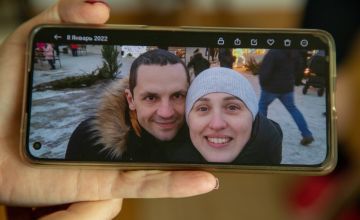
It took three days for Sofia, Vanko and Anton to travel to the Romanian border, relying on the kindness of strangers for fuel and accommodation. One night, the family slept in a church. When they reached the border, Vanko was not allowed to cross, and travelled to the nearby town Ivano Frankivsk with the family’s pet chihuahua, Busso.
It took Sofia and Anton a further seven hours to get from the border to the town of Siret, where they were picked up by volunteers and taken to Cluj. They were taken in by a kind volunteer, but remained stuck in limbo without work, education or permanent accommodation while hoping for an eventual safe return to their home in Ukraine.
*Names have been changed for security reasons
Concern's work with refugees
Concern’s response to the world’s displacement crisis is in keeping with the Comprehensive Refugee Response Framework, approved by all 193 Member States of the United Nations in September 2016.
While every emergency situation has its own unique considerations and challenges, the CRRF gives a set of guidelines for approaching the predictable aspects of these crises. This includes:
- Easing pressure on countries that welcome and host refugees
- Building self-reliance of refugees
- Expanding access to resettlement of refugees in third countries or offering other complementary pathways
- Fostering conditions that enable refugees to voluntarily return to their home countries
Last year alone, Concern responded to 66 emergencies in 23 countries, reaching 17.8 million people with urgent necessities such as shelter, psychosocial support, healthcare, and food as well as longer-term livelihoods trainings that benefit both displaced and host communities.
We continue to respond to humanitarian crises in the countries we work in, including Chad, which has recently taken in over 30,000 refugees from neighbouring Sudan, due to conflict. Concern’s team is planning to respond with providing shelter, basic household items, mobile health clinics and nutrition support, as well as WASH (water, sanitation and hygiene). Prudence Ndolimana, Goz Beida Area Coordinator for Concern in Chad, explains: “We ensure our programmes are conflict sensitive and include protection measures to ensure that people can live together in harmony and are well-received into the communities where they will be living.”
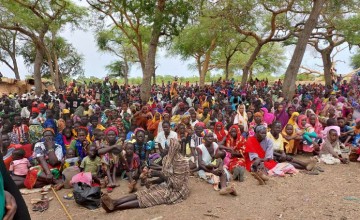
Other ways to help
Donate now
Give a one-off, or a monthly, donation today.
Join an event
From mountain trekking to marathon running, join us for one of our many exciting outdoor events!
Buy a gift
With an extensive range of alternative gifts, we have something to suit everybody.
Leave a gift in your will
Leave the world a better place with a life-changing legacy.
Become a corporate supporter
We partner with a range of organisations that share our passion and the results have been fantastic.
Create your own fundraising event
Raise money for Concern by organising your own charity fundraising event.





